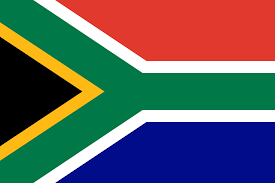Southern African Development Community
South Africa

South Africa
The Republic of South Africa occupies the southernmost part of the African continent stretching from the Limpopo River in the north to Cape Agulhas in the south. Covering an area of 1,219,090 km², the country shares borders with Namibia, Botswana and Zimbabwe in the north, and with Swaziland and Mozambique in the northeast. It also entirely surrounds the Kingdom of Lesotho. To the west, south and east, South Africa borders the Atlantic and southern Indian oceans. The country’s coastline covers some 2,968 km. Lying 1,920 km southeast of Cape Town in the Atlantic Ocean are the isolated Prince Edward and Marion islands, which were annexed by South Africa in 1947.
Summer in South Africa is from October until March and temperatures average between 15 °C at night and 35 °C at noon. Winter is from April to September with temperatures ranging from 0 °C or less at night to 20 °C at midday. Despite regional differences, South Africa’s climate is generally mild throughout the year. South Africa is a semi-arid country with a mean annual rainfall of 464mm per annum, compared to the world average of 857mm per annum, with snowfall limited to the highest mountain peaks of the Maluti-Drakensberg mountain range.
Of an estimated population of 50,586,000, around 77 % are of African origin, 10 % of European descent, Asians 3 % and those of mixed origins, known as Coloureds, 9 %. There are 11 official languages: English, Afrikaans, Ndebele, Pedi, Sotho, Swati, Tsonga, Tswana, Venda, Xhosa and Zulu, each of which is the first language for many of South Africa's people. The first democratic elections were held in 1994 and South Africa was then divided into nine new provinces including the Western Cape, Eastern Cape, Northern Cape, Free State, KwaZulu-Natal, North- West, Gauteng, Mpumalanga and the Northern Province. Pretoria is the administrative capital of South Africa, other main centres are Johannesburg, Durban and Cape Town. Democratic elections are held every five years and the Head of State is the President. The last elections were held in 2004
The South African economy is the most advanced on the African continent, with a sophisticated financial system that includes one of the top 10 stock exchanges in the world, and well developed physical, telecommunications, and energy infrastructures. As an emerging market in the global economy, South Africa is a leader and a competitive producer of raw commodity exports and value-added goods, such as motor vehicles. Major contributors to the manufacturing sector include chemicals, food, transport equipment, and iron and steel. Modern and sophisticated metal and engineering industries represent one-third of the manufacturing sector's contribution to Gross Domestic Product (GDP). Some 325,000 people are employed by over 9,000 companies. The dependence of the South African economy on mining has declined, and with that also its degree of exposure to commodity prices.
The tourism industry is rapidly developing into an important generator of employment opportunities. It is presently the fourth largest economic sector in South Africa with around 700 hotels, 2,800 guest houses, and more than 10,000 restaurants. The fastest-growing segment in the industry is ecotourism, including photographic safaris, bird watching, botanical studies, mountaineering, snorkelling and hiking. There are 17 national parks in South Africa, the largest being Kruger National Park in the Northern Province and Mpumalanga. Major tourist attractions include Table Mountain and the cableway, Victoria and Alfred Waterfront, Cape of Good Hope Nature Reserve, Kirstenbosch National Botanical Gardens, Oudshoorn (Cango Caves, Cango Crocodile Ranch, Highgate and Safari Ostrich Farm), Karoo National Park, Sea World, Howick Falls, Drakensberg, Umfolozi Game Reserve, Natal National Botanical Gardens, St. Lucia Game Reserve, Pilgrim’s Rest, Gold Reef City, Pretoria National Botanical Gardens, Warmbaths, Sun City, Lost City and Pilanesberg National Park.
Titles | Information |
Head of State | H.E. Cyril Ramaphosa |
Head of Government ( if applicable) | - |
Capital City | Pretoria ( Tshwane) - administrative/executive Cape Town - legislative Bloemfontein -Judicial |
Independence Day | 27 April 1994 |
Official Languages | Afrikaans, English, Ndebele, Northern Sotho, Sotho, Swazi, Tswana, Tsonga, Venda, Xhosa, Zulu |
Currency | South African Rand (ZAR) R 1 = 100 cents |
Area/Size of the country (km²) | 1,219,090 |
Natural resources | Gold, coal, platinum, iron ore, copper, timber, sugar, fish, sea and marine resources, wildlife |
Government website link | |
Statistical indicators | Please refer to the latest SADC Statistics Yearbook |
South Africa SADC National Focal Point
Ms Linda Vuyolwethu Shongwe SADC National Contact Point Chief Director: SADC Department of International Relations and Cooperation OR Tambo Building 460 Soutpansberg Road, Rietondale, PRETORIA 0084, SOUTH AFRICA Tel: + 27 723884326 Landline: + 2712 3511349 E-mail: shongwel@dirco.gov.za |
Sign in to add your comment.